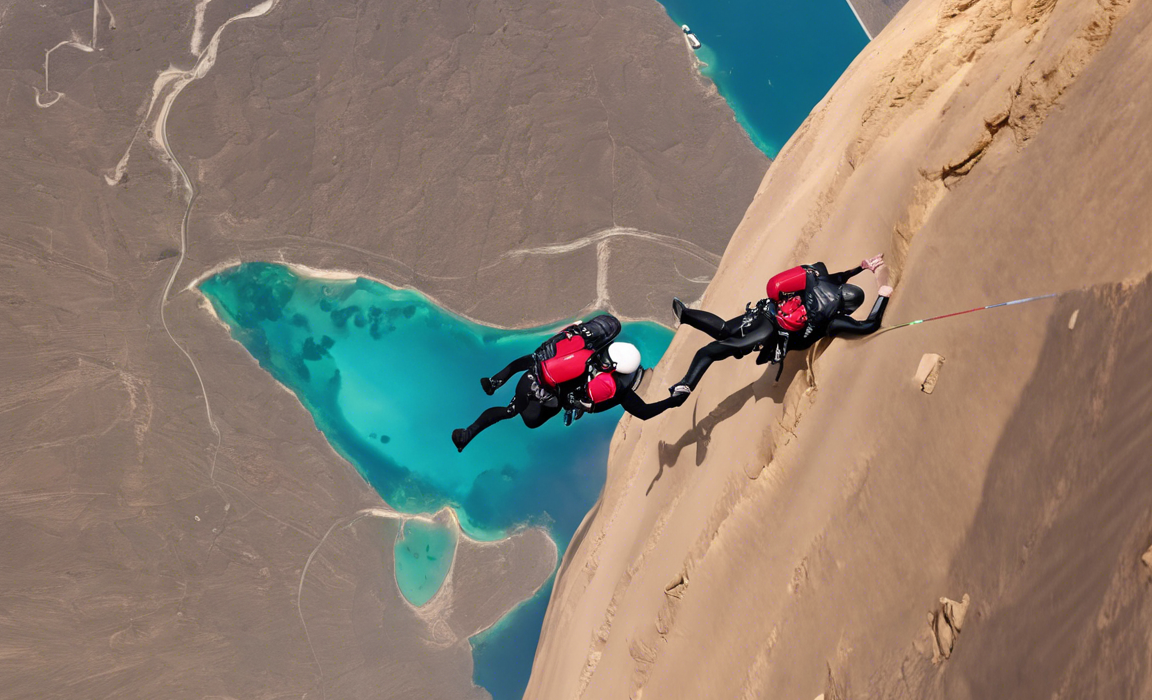In the realm of extreme sports and daredevil stunts, death dives are among the most heart-stopping and dangerous feats that bring excitement, fear, and awe to spectators around the world. The term “death dive” itself conjures up images of breathtaking falls from incredible heights, where the margin for error is razor-thin and the consequences can be fatal. For those who dare to take on this adrenaline-pumping challenge, it’s a test of courage, skill, and sheer determination.
Defining the Death Dive
A death dive is a freefall jump from a significant height, usually performed with the intention of reaching a specific target or landing area. This type of extreme sport is often associated with BASE jumping, cliff diving, or other high-altitude activities where the risk of injury or death is inherent. The thrill of the death dive comes from the sheer velocity and acceleration experienced during the fall, as well as the need to execute a precise landing to avoid disaster.
Record-Breaking Death Dives
Over the years, numerous individuals have pushed the limits of what is considered possible in the world of death dives, setting records for the highest jumps and most daring feats. One of the most notable records in this category is the highest death dive, a title that requires not only nerves of steel but also meticulous planning and execution.
The current world record for the highest death dive is held by Luke Aikins, a seasoned skydiver and stuntman known for his daring exploits. In 2016, Aikins made history by performing a death dive from an astonishing 25,000 feet without a parachute. In a death-defying feat broadcast live on television, he plummeted towards the ground at speeds exceeding 120 miles per hour before landing safely in a specially designed net.
The Science Behind Death Dives
The success of a death dive hinges on a delicate balance of physics, aerodynamics, and human physiology. As the diver leaps from the towering height, they are subject to the forces of gravity, wind resistance, and air pressure, all of which can impact their speed, trajectory, and stability during the fall. In order to reach their target with precision and avoid disaster, the diver must maintain a controlled body position, adjust their posture as needed, and make split-second decisions to course-correct if necessary.
Safety Measures and Precautions
While death dives may appear reckless and extreme to the uninitiated, seasoned professionals take extensive precautions to mitigate the risks involved in these high-stakes jumps. Prior to attempting a death dive, divers undergo rigorous training, practice jumps, and thorough equipment checks to ensure that they are prepared for the challenge ahead. In addition, safety measures such as backup parachutes, emergency medical personnel on standby, and detailed contingency plans are put in place to address any unforeseen complications that may arise during the jump.
The Thrill of the Descent
For those who engage in death diving as a sport or hobby, the thrill of the descent is unlike anything else in the world. The rush of adrenaline, the sensation of freefalling through the air, and the breathtaking views from high above all combine to create an unforgettable experience that tests the limits of human courage and skill. While the risks are undeniably high, so too are the rewards for those who successfully conquer the challenge of the death dive.
Frequently Asked Questions (FAQs) About Death Dives
Q: How do death divers ensure a safe landing?
A: Death divers undergo extensive training to learn proper landing techniques, including how to position their body and when to deploy their parachute if necessary.
Q: What are some of the common risks associated with death dives?
A: Risks of death dives include equipment malfunction, improper landing, changing weather conditions, and human error.
Q: Are death dives legal in all locations?
A: Death dives are often restricted or prohibited in many places due to safety concerns and legal regulations.
Q: How can someone get started in death diving?
A: It is recommended to seek training from experienced professionals, start with lower jumps, and gradually work your way up to higher altitudes.
Q: What are some of the mental skills needed for death diving?
A: Mental skills such as focus, concentration, quick decision-making, and risk assessment are crucial for successful death dives.
In conclusion, the world of death diving is not for the faint of heart, but for those who seek the ultimate adrenaline rush and are willing to push the boundaries of human potential, it offers a unique and exhilarating challenge unlike any other. As record-breaking feats continue to inspire and captivate audiences worldwide, the allure of the highest death dive remains a testament to the courage, skill, and determination of those who dare to defy gravity and reach for the sky.






